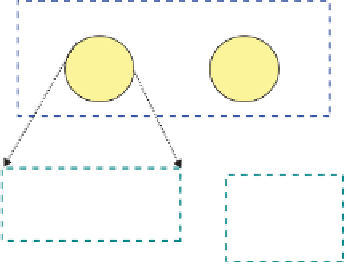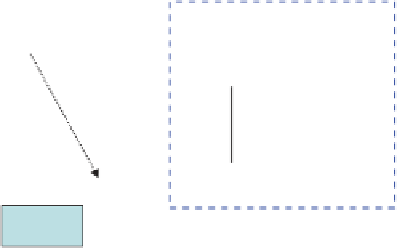Environmental Engineering Reference
In-Depth Information
Level 1
Energy
System boundary
S
a
S
1
S
2
S
3
S
4
Mass
T
1
T
2
T
3
S
b
S
6
S
5
T
4
S
c
S
a
Level 2
Level 2
T
2
Two phases
T
3
S
3
S
2
S
21
T
21
T
22
Well mixed
S
4
S
34
S
b
Level 3
Two phases
Well mixed
Level 3
S
3
S
5
S
b
S
a
One phase
Plug low
Plug low
Well mixed
S
a2
S
2
S
21
S
3
FIGURE 7.5
Multilevel network structure of a process with expanded nodes. Top: process
reference network of streams and nodes. Bottom left: two levels of expansion of node
T
2
.
Bottom right: expansion of node
T
3
in a two-phase, well-mixed volume.
hydrodynamic regimes. The resources in the network flow from one node to another,
coupled or separately:
Chemical species
, which change in identity and amount by chemical reactions.
Mass
, differentiated in various chemical species and in thermodynamic phases:
gases, liquids (organic, aqueous), and solids (in dispersed or massive form).
Energy
, differentiated in various forms: chemical, thermal, and mechanical
(work), electrical power, and electromagnetic field energy (radiation); potential
and kinetic energy contributions are almost always small enough to be ignored
in chemical processes.
Momentum
, considering convective flow and pressure drop.
Electrical charge
.
Information
, in the form of signals from sensors to controllers to actuators.
The nodes in the network act on one or more resources by changing their amounts.
Some common examples are reactors and fuel cells (involving a change of species






























































Search WWH ::

Custom Search